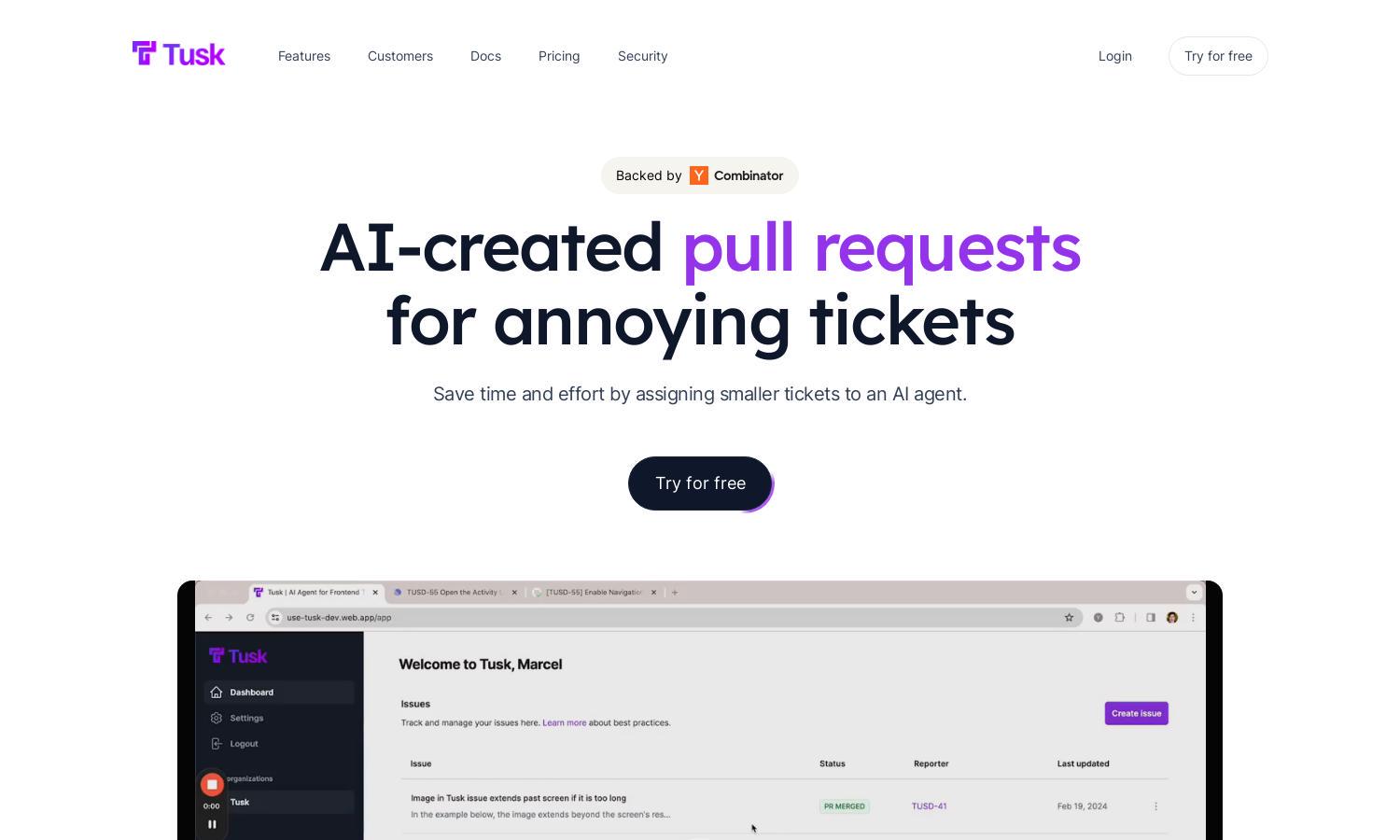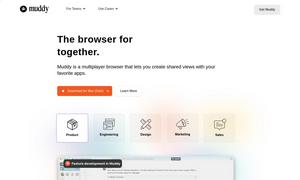Tusk

About Tusk
Tusk is an innovative AI-powered coding agent that addresses UI issues in real-time, targeting engineering, product, and design teams focused on quality craftsmanship. Its unique feature, instant pull requests, streamlines the coding process, allowing teams to enhance user satisfaction and product reliability effortlessly.
Tusk offers a variety of pricing plans, including tiered subscriptions that cater to different team sizes and needs. Each tier provides users with essential features such as AI-generated pull requests and automated testing. Upgrading unlocks advanced capabilities, ensuring a smoother coding experience.
Tusk's user interface is designed for seamless navigation, featuring an intuitive layout that enhances user experience. Key features are easily accessible, allowing users to quickly generate pull requests and run automated tests, making Tusk a highly user-friendly platform for coding efficiency.
How Tusk works
Users interact with Tusk by first onboarding through simple registration. Once set up, they can add the 'Tusk' label to issues on platforms like Jira or GitHub, prompting the AI to generate pull requests swiftly. Tusk also runs tests and iterates on feedback just like a developer, simplifying the bug-fixing workflow.
Key Features for Tusk
Instant Pull Requests
Tusk offers a dynamic Instant Pull Requests feature that allows users to resolve UI issues quickly. By adding a simple label to their tickets, teams can save time and enhance productivity, as Tusk automatically generates pull requests, streamlining the development process effectively.
Automated Testing
Automated Testing is a standout feature of Tusk, ensuring that all provided pull requests undergo rigorous checks before integration. This functionality saves developers from potential issues, improving software reliability, and allowing teams to focus on higher-priority tasks while Tusk manages testing efficiently.
Iterative Code Improvements
Tusk excels in providing Iterative Code Improvements, allowing it to refine pull requests based on team feedback. This feature mimics a developer's iterative process, ensuring modifications are in line with project standards and enhancing collaboration between teams by addressing concerns before finalizing a merge.








